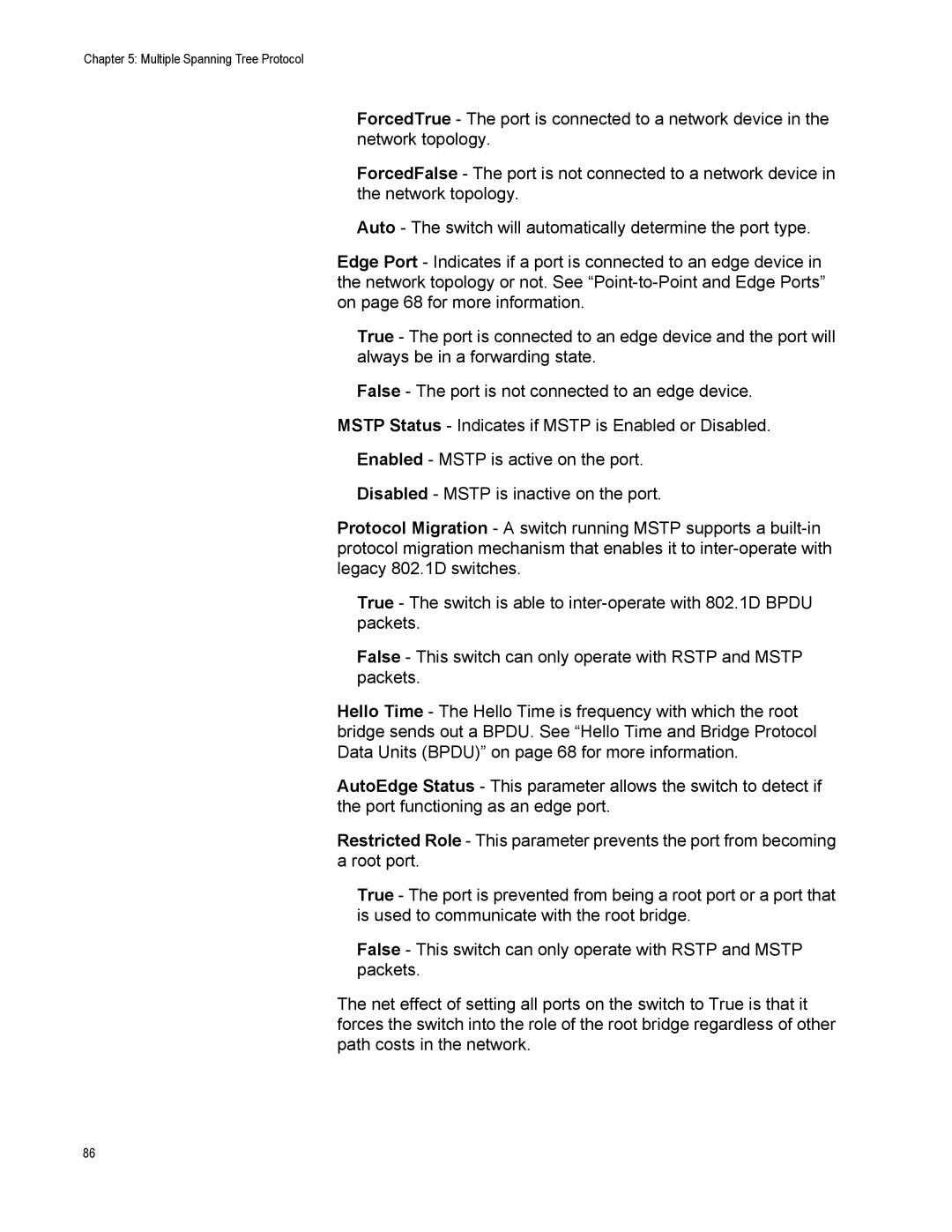Chapter 5: Multiple Spanning Tree Protocol
ForcedTrue - The port is connected to a network device in the network topology.
ForcedFalse - The port is not connected to a network device in the network topology.
Auto - The switch will automatically determine the port type.
Edge Port - Indicates if a port is connected to an edge device in the network topology or not. See
True - The port is connected to an edge device and the port will always be in a forwarding state.
False - The port is not connected to an edge device.
MSTP Status - Indicates if MSTP is Enabled or Disabled.
Enabled - MSTP is active on the port.
Disabled - MSTP is inactive on the port.
Protocol Migration - A switch running MSTP supports a
True - The switch is able to
False - This switch can only operate with RSTP and MSTP packets.
Hello Time - The Hello Time is frequency with which the root bridge sends out a BPDU. See “Hello Time and Bridge Protocol Data Units (BPDU)” on page 68 for more information.
AutoEdge Status - This parameter allows the switch to detect if the port functioning as an edge port.
Restricted Role - This parameter prevents the port from becoming a root port.
True - The port is prevented from being a root port or a port that is used to communicate with the root bridge.
False - This switch can only operate with RSTP and MSTP packets.
The net effect of setting all ports on the switch to True is that it forces the switch into the role of the root bridge regardless of other path costs in the network.
86
